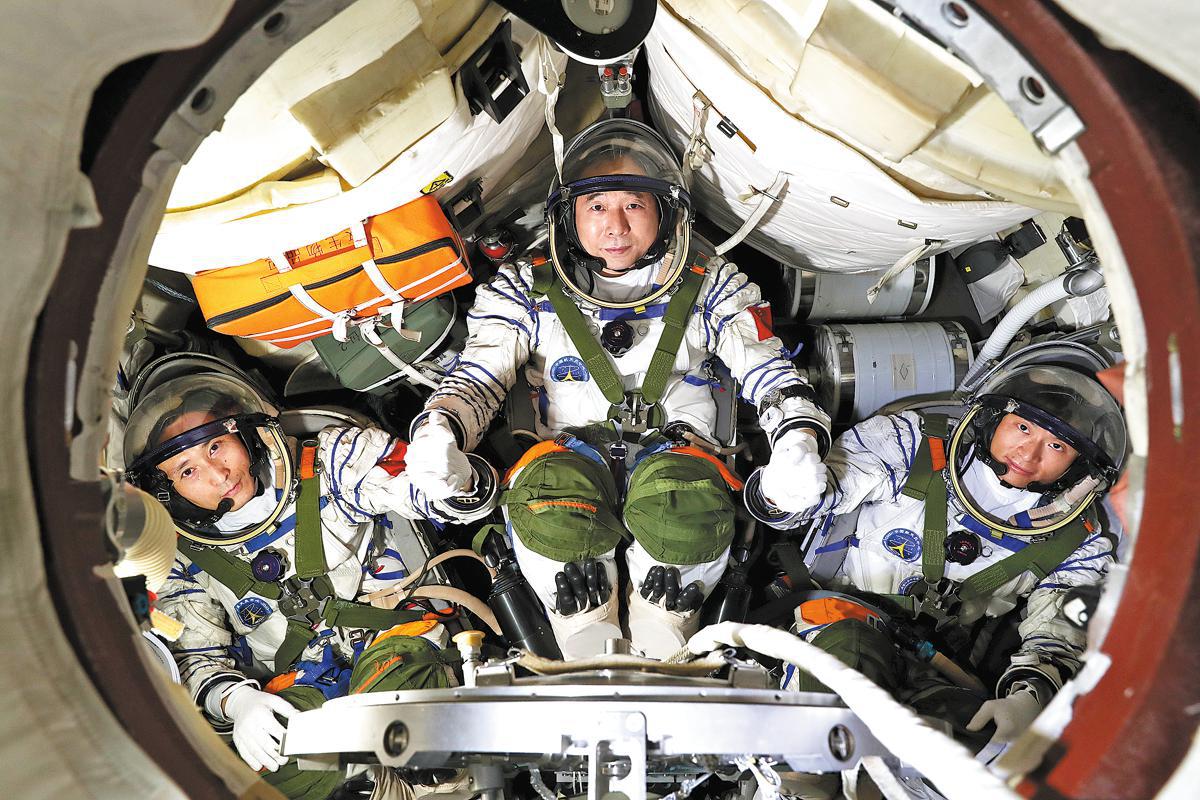China aims to make manned moon landing before 2030

Shenzhou XVI crew members Jing Haipeng (center), Zhu Yangzhu (left) and Gui Haichao receive training in a spaceflight simulator on May 8.Xu Bu / for China Daily
China plans to send astronauts to the moon before 2030, a space official said on Monday.
Lin Xiqiang, deputy director of the China Manned Space Agency, said at a news conference at the Jiuquan Satellite Launch Center in northwestern China that the country's space authorities have launched the manned lunar program.
"The overall goals are to realize China's first manned landing on the moon before 2030, carry out scientific exploration and related technology demonstrations on the lunar surface, develop a commuting system and short-term stay system for crews, and develop human-robot integrated testing and other key technologies," Lin said.
"Our astronauts will walk on the moon, collect samples around the landing site and perform some in situ research. This will lead off our manned missions from low-Earth orbit to deep space and help deepen mankind's knowledge about the origin and evolution of the moon and the solar system," the official said.
Lin made the remarks while answering a question from China Daily on whether and when China will send its astronauts to the moon.
To achieve this mission, Lin's office has arranged the research and development of all relevant systems, including the new Long March 10 carrier rocket, a lunar landing capsule and a lunar extravehicular suit. New rocket-testing and launch facilities will also be constructed, he added.
Lin said that the agency will publish notices in due course to solicit scientific payloads to be carried during the manned mission, as well as conceptual designs for the mission's lunar rover.
According to a notice published on the agency's website on Monday, the manned lunar rover will be able to carry two astronauts and will have positioning, communications and scientific detection functions.
Wang Yanan, editor-in-chief of Aerospace Knowledge magazine, said on Monday that a new stronger carrier rocket should be the first system Chinese space researchers develop to make the moon mission possible.
"Only after we have the Long March 10 can we send large, sophisticated crew capsules to the moon and bring them back safely," he said.
According to the China Academy of Launch Vehicle Technology, the nation's major carrier-rocket maker, the Long March 10 will be 88.5 meters tall, roughly the height of a 31-story residential building. The gigantic rocket will have a liftoff weight of 2,187 metric tons and will be capable of transporting spacecraft weighing at least 27 tons to an Earth-moon transfer trajectory.
Yang Yuguang, a senior space industry observer in Beijing and vice-chair of the International Astronautical Federation's space transportation committee, said in addition to the new rocket and lunar landing craft, extravehicular suits for astronauts to use on the lunar surface will also be very important for a crew's safety "considering the impact of the hazardous environment on the moon".
China's space authorities have announced a long-term plan to land astronauts on the moon and set up at least one science station there. They hope to use the manned missions to carry out scientific surveys and technological research, explore ways to develop lunar resources and strengthen the nation's space capabilities.
Zhou Yanfei, a deputy chief designer of China's manned space program, has said the country has the capacity to independently land astronauts on the moon because of its technologies, well-trained, innovative professionals and efficient research and management systems.
Photos
Related Stories
- Shenzhou XVI crew looks forward to challenge
- China's next manned space mission to begin soon
- China successfully launches flagship cargo mission supporting China Space Station's new operation phase
- China's cargo craft Tianzhou-6 ready for launch in Hainan
- Shenzhou XV mission crew members set China record
- Selection of foreign space crew to start
- China to launch 2 manned spaceships plus cargo spacecraft annually from 2023
- China's Shenzhou-14 separates from space station combination
- China's Shenzhou-14 astronauts to return to Earth on Dec. 4
- Crew ready for launch of Shenzhou XV mission
Copyright © 2023 People's Daily Online. All Rights Reserved.









